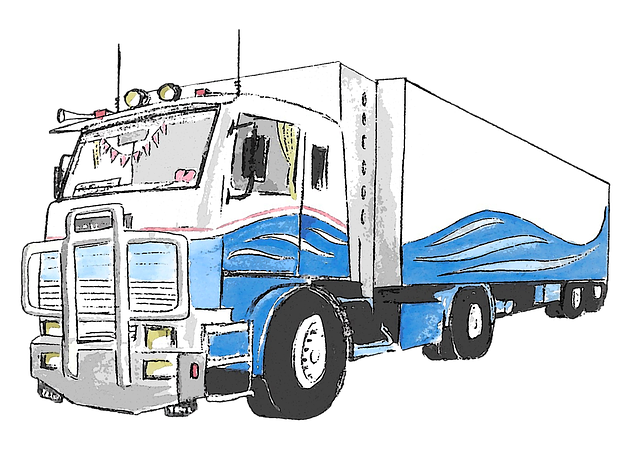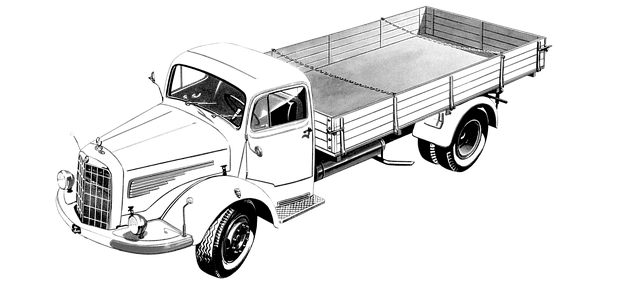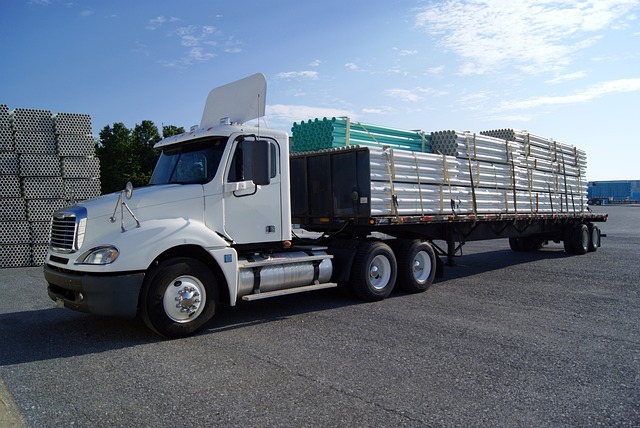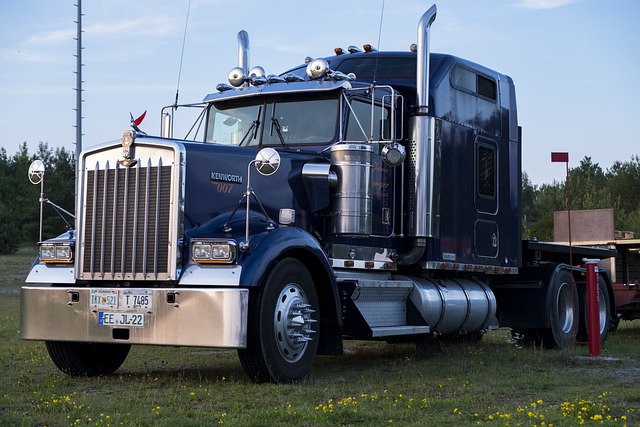The environmental impact of truck batteries, particularly their ecological risks due to hazardous substances like lead, has been significantly mitigated with advancements in battery technology and stricter regulations. The shift from traditional lead-acid batteries to more sustainable options such as lithium-ion has reduced the immediate threats to wildlife and natural habitats. Environmental monitoring plays a crucial role in assessing these impacts and guiding conservation efforts. Through community education, responsible disposal, and specialized recycling centers, the risks associated with improper battery handling are being minimized, ensuring that the transition to greener energy solutions also protects biodiversity. The financial benefits from recycling are often reinvested into habitat restoration, creating a sustainable cycle that benefits both the environment and the economy. Public awareness campaigns and regulatory measures are driving manufacturers to innovate with designs that prioritize environmental safety, contributing to the overall reduction of the transportation sector's environmental footprint.
7 Tips on Electric Battery Wildlife Impact
The integration of technology into our daily lives has led to an increase in electronic waste, particularly from the use and disposal of truck batteries. These batteries can significantly impact wildlife habitats due to their lead content and other hazardous materials. In this comprehensive guide, we explore the multifaceted relationship between electric battery disposal, environmental health, and fauna conservation. From understanding the role of truck batteries in ecosystems to advocating for sustainable practices and community education, our article provides a critical examination of how to mitigate the adverse effects of battery waste on wildlife. We delve into the latest innovations in battery technology, policy frameworks, and monitoring strategies that are crucial for safeguarding our planet’s natural inhabitants and their habitats. Join us as we navigate the complexities of this pressing issue.
- Understanding the Role of Truck Batteries in Wildlife Habitats
- Assessing the Environmental Impact of Lead from Truck Batteries on Fauna
- Proper Disposal and Recycling Practices to Minimize Battery-Related Risks for Wildlife
- Alternative Power Sources: Electric Vehicles and Their Implications for Ecosystems
- Habitat Restoration Efforts Aided by Truck Battery Regulations
- Educating the Community on Eco-Friendly Battery Handling to Protect Local Flora and Fauna
- Innovations in Battery Technology: Reducing Wildlife Exposure to Hazardous Substances
- Monitoring Wildlife Health to Detect Impacts from Battery Pollution
Understanding the Role of Truck Batteries in Wildlife Habitats

The deployment of spent truck batteries in wildlife habitats has emerged as a multifaceted environmental intervention. These batteries, once they reach the end of their useful life, can be repurposed to provide a sustainable energy source for various ecological applications. The energy density and durability inherent in truck batteries make them particularly suitable for powering remote wildlife cameras, GPS trackers, and other devices used in monitoring and protecting animal populations. By integrating these batteries into the ecosystem, their post-service life is extended, reducing waste and the environmental impact associated with battery disposal. Moreover, the placement of these batteries must be carefully considered to minimize any potential negative effects on wildlife behavior or habitat integrity. Researchers and conservationists are exploring optimal locations for installing these energy sources, ensuring they support wildlife without interference or harm. The strategic use of truck batteries in this manner not only contributes to conservation efforts but also showcases the innovative repurposing of technology, aligning with sustainable practices and offering a model for integrating human-made artifacts into natural environments responsibly. As such, the role of truck batteries in wildlife habitats is an evolving area of study with significant implications for both conservation and technological recycling.
Assessing the Environmental Impact of Lead from Truck Batteries on Fauna

When evaluating the environmental impact of lead from truck batteries on fauna, it’s crucial to consider the lifecycle of these batteries and their potential for release into ecosystems. Lead, a hazardous substance found in traditional truck batteries, can have detrimental effects on wildlife health and behavior when present in the environment. Improper disposal or recycling processes can lead to lead leaching into soil and water sources, posing significant risks to various species. The bioaccumulation of lead in the food chain, particularly affecting predators at higher trophic levels, can cause reproductive issues, growth impairments, and neurological defects. It’s imperative to implement responsible disposal and recycling practices for truck batteries to mitigate these risks. Advanced recycling technologies and stringent environmental regulations play a pivotal role in reducing the environmental footprint of lead from truck batteries. By promoting the use of maintenance-free or less toxic battery alternatives, such as AGM (Absorbed Glass Mat) or GEL batteries, the potential negative impact on wildlife can be significantly diminished. Encouraging proper handling and disposal by both manufacturers and consumers is essential to safeguard the health of our planet’s fauna.
Proper Disposal and Recycling Practices to Minimize Battery-Related Risks for Wildlife

When a truck battery reaches its end of life, it’s imperative to handle it with care to minimize environmental impact and protect local wildlife. Improper disposal can lead to harmful substances leaching into soil and water sources, affecting both flora and fauna. Lead, a key component in many batteries, is particularly toxic to animals and can cause severe health issues if ingested or absorbed through their habitats. To mitigate these risks, it’s crucial to recycle truck batteries responsibly. Recycling centers equipped to handle such materials can recover valuable components like lead, plastic, and sulfuric acid, transforming them into new products. This not only conserves natural resources but also prevents hazardous substances from entering the ecosystem. Homeowners and businesses should be aware of local recycling facilities and establish convenient disposal routes for expired truck batteries. By adhering to these recycling practices, we can collectively ensure that our efforts to maintain efficient transportation networks do not compromise the health and safety of our wildlife. It’s a shared responsibility to encourage and facilitate proper battery disposal, guaranteeing that each component is repurposed in an environmentally sound manner.
Alternative Power Sources: Electric Vehicles and Their Implications for Ecosystems

The advent of electric vehicles (EVs) represents a significant shift in transportation paradigms, with profound implications for ecosystems. As the demand for EVs grows, so does the need for advanced battery technologies to power these vehicles efficiently. Truck batteries, owing to their large capacity and robust construction, play a pivotal role in this transition. These batteries not only offer a cleaner alternative to internal combustion engine vehicles but also present unique considerations regarding waste management and resource extraction. The recycling and proper disposal of these batteries are critical to mitigate environmental impact, as improper handling can lead to soil and water pollution. Moreover, the sourcing of materials like lithium and cobalt raises concerns about habitat disruption in their respective extraction regions. It’s imperative to explore alternative power sources that minimize ecological footprints, such as solar or wind energy integration, to ensure these technologies contribute positively to biodiversity conservation. As the transportation sector moves towards electrification, a concerted effort must be made to develop and deploy sustainable battery solutions that align with ecological preservation efforts. This includes innovations in battery chemistry, lifecycle assessments, and closed-loop recycling systems to prevent waste and conserve natural resources, ultimately ensuring that the transition to electric vehicles supports rather than undermines the health of our planet’s ecosystems.
Habitat Restoration Efforts Aided by Truck Battery Regulations

Habitat restoration efforts have gained significant momentum with the advent of stringent truck battery regulations. These regulations, aimed at reducing the environmental impact of spent automotive batteries, have led to a surge in the collection and recycling of these batteries. The increased availability of materials from recycled truck batteries has facilitated the creation of more efficient and sustainable habitat restoration projects. For instance, the lead from old truck batteries can be safely repurposed into new products, including those used in wildlife habitats, without posing a risk to ecosystems. This not only addresses the issue of waste management but also ensures that the materials are reintroduced into the economy in a responsible manner.
Furthermore, the regulations have spurred innovation in battery technology, leading to the development of more environmentally friendly options for transportation and heavy-duty machinery. These advancements are crucial as they directly impact the conservation efforts by reducing the environmental footprint of these industries. The funds generated from the recycling programs often support habitat restoration initiatives, creating a closed-loop system where the end-of-life batteries contribute positively to nature’s preservation. This symbiotic relationship between waste management and environmental protection underscores the importance of regulations on spent truck batteries in promoting sustainable practices within the industry and beyond.
Educating the Community on Eco-Friendly Battery Handling to Protect Local Flora and Fauna

When managing electric batteries, particularly truck batteries, which are among the most commonly used in transportation and heavy-duty applications, it is crucial to adopt eco-friendly handling practices. Improper disposal of these batteries can have detrimental effects on local flora and fauna. To mitigate such impacts, educating the community plays a pivotal role. Informational campaigns can teach residents and businesses the correct procedures for recycling or safely disposing of used truck batteries. These efforts prevent harmful substances like lead, acid, and plastic from seeping into the soil and waterways, which could otherwise disrupt the natural habitats of wildlife. By partnering with local waste management facilities and promoting responsible battery recycling programs, communities can ensure these materials are handled in an environmentally sound manner. This not only protects the health of ecosystems but also safeguards human health by reducing exposure to toxic compounds.
Encouraging the use of recycling centers equipped to handle different types of batteries is another important aspect of community education. These facilities employ specialized processes to recover and reuse materials, minimizing waste and reducing the environmental footprint. Additionally, awareness campaigns can highlight the importance of selecting batteries with a lower environmental impact from the outset. By advocating for the adoption of advanced battery technologies that are less polluting and more sustainable, communities can collectively contribute to the preservation of biodiversity and the maintenance of ecological balance. Through concerted educational initiatives and responsible actions, we can all play a part in protecting our local flora and fauna from the impacts of electric batteries.
Innovations in Battery Technology: Reducing Wildlife Exposure to Hazardous Substances

Innovations in battery technology have significantly reduced wildlife exposure to hazardous substances, particularly with the advent of more sustainable and less toxic options. Traditional lead-acid truck batteries, for instance, contained lead, a substance that could be detrimental to wildlife if released into the environment. However, modern alternatives like lithium-ion batteries offer a substantial decrease in environmental risk. These advanced batteries are not only safer for wildlife but also more efficient and longer-lasting, which is crucial for industries reliant on heavy machinery and transportation logistics. The shift towards these technologies is complemented by stricter regulations and increased awareness of the ecological impact of battery disposal. Manufacturers are now focusing on designing batteries that minimize leakage and are easily recyclable, ensuring that even when they reach the end of their lifecycle, they pose minimal threat to natural habitats and species. This proactive approach in battery development not only addresses the immediate concern of wildlife exposure but also sets a precedent for future sustainable practices across various sectors. As such, the integration of these innovative batteries into commercial vehicles, such as electric trucks, is a step towards mitigating the environmental footprint and safeguarding biodiversity.
Monitoring Wildlife Health to Detect Impacts from Battery Pollution

Monitoring wildlife health is a critical aspect of assessing the environmental impact of battery pollution, particularly from sources like truck batteries. The integrity of ecosystems can be compromised when heavy metals such as lead from truck batteries seep into soil and waterways. These substances can disrupt normal physiological functions in animals, leading to adverse health effects that may manifest as decreased fertility, altered behavior, or even mortality. To effectively monitor wildlife for these impacts, veterinarians and ecologists employ a variety of methods, including field surveys, necropsies, and the use of bioindicators—species particularly sensitive to environmental changes that can signal broader trends within the ecosystem. By analyzing the blood, tissue, or eggs of these indicator species, researchers can detect trace levels of contaminants, providing early evidence of pollution and enabling prompt intervention measures. Advanced technologies like DNA barcoding further enhance the ability to identify species and substances involved, ensuring a more precise understanding of the pollution’s effects on wildlife health. Regular monitoring programs not only aid in the detection of pollution-related impacts but also inform the development of mitigation strategies, such as the proper disposal and recycling of truck batteries, thereby safeguarding both wildlife and human health.
In concluding our discussion on mitigating the impact of electric batteries on wildlife, it’s clear that a multifaceted approach is necessary. From understanding the role of truck batteries in wildlife habitats to the implementation of stringent recycling practices, each tip presented offers a pivotal step towards safeguarding our planet’s biodiversity. The transition to electric vehicles, coupled with innovative battery technologies, promises a reduction in wildlife exposure to hazardous substances. It is imperative that communities are educated on the importance of eco-friendly battery handling to protect local ecosystems. By adhering to these guidelines and actively monitoring wildlife health, we can work towards a future where both human activities and natural habitats coexist harmoniously. The collective effort in this direction will undoubtedly yield significant benefits for our environment and the myriad of species that inhabit it.
